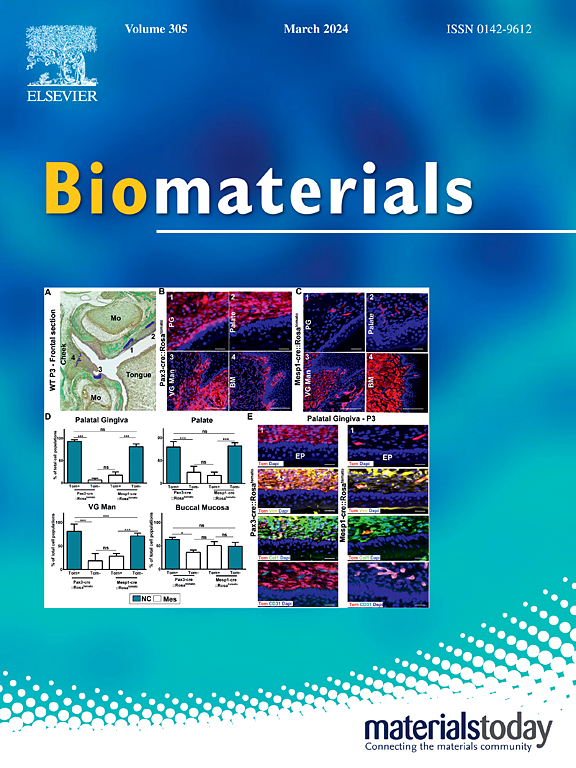Manganese-coordinated nanoparticles loaded with CHK1 inhibitor dually activate cGAS-STING pathway and enhance efficacy of immune checkpoint therapy
IF 12.8
1区 医学
Q1 ENGINEERING, BIOMEDICAL
引用次数: 0
Abstract
Notable advancements have been made in utilizing immune checkpoint blockade (ICB) for the treatment of various cancers. However, the overall response rates and therapeutic effectiveness remain unsatisfactory. One cause is the inadequate immune environment characterized by poor T cell infiltration in tumors. To address these limitations, enhancing immune infiltration is crucial for optimizing the therapeutic efficacy of ICB. Activating the cyclic GMP-AMP synthase-stimulator of interferon genes (cGAS-STING) pathway is essential for initiating immune response and has become a potential target for developing combination therapies with ICB. In this study, we designed and fabricated manganese-containing nanoparticles loaded with the CHK1 inhibitor PF477736, which were subsequently encapsulated with macrophage membrane (PF/MMSN@MPM). This innovative design achieved excellent tumor targeting and demonstrated potent antitumor effects. The combination therapy dually amplified the cGAS-STING pathway, causing a cascade of enhanced therapeutic effects against tumors. Furthermore, single-cell mass cytometry (CyTOF) analysis revealed that PF/MMSN@MPM enhanced the activation and infiltration of immune cells. Moreover, the combination of PF/MMSN@MPM with anti-PD-1 (αPD-1) exhibited a stronger therapeutic effect compared to αPD-1 alone. PF/MMSN@MPM precisely and synergistically activated the cGAS-STING pathway, significantly improving therapeutic efficacy of ICB, and offering promising potential for tumor therapy.

求助全文
约1分钟内获得全文
求助全文
来源期刊

Biomaterials
工程技术-材料科学:生物材料
CiteScore
26.00
自引率
2.90%
发文量
565
审稿时长
46 days
期刊介绍:
Biomaterials is an international journal covering the science and clinical application of biomaterials. A biomaterial is now defined as a substance that has been engineered to take a form which, alone or as part of a complex system, is used to direct, by control of interactions with components of living systems, the course of any therapeutic or diagnostic procedure. It is the aim of the journal to provide a peer-reviewed forum for the publication of original papers and authoritative review and opinion papers dealing with the most important issues facing the use of biomaterials in clinical practice. The scope of the journal covers the wide range of physical, biological and chemical sciences that underpin the design of biomaterials and the clinical disciplines in which they are used. These sciences include polymer synthesis and characterization, drug and gene vector design, the biology of the host response, immunology and toxicology and self assembly at the nanoscale. Clinical applications include the therapies of medical technology and regenerative medicine in all clinical disciplines, and diagnostic systems that reply on innovative contrast and sensing agents. The journal is relevant to areas such as cancer diagnosis and therapy, implantable devices, drug delivery systems, gene vectors, bionanotechnology and tissue engineering.
 求助内容:
求助内容: 应助结果提醒方式:
应助结果提醒方式:


